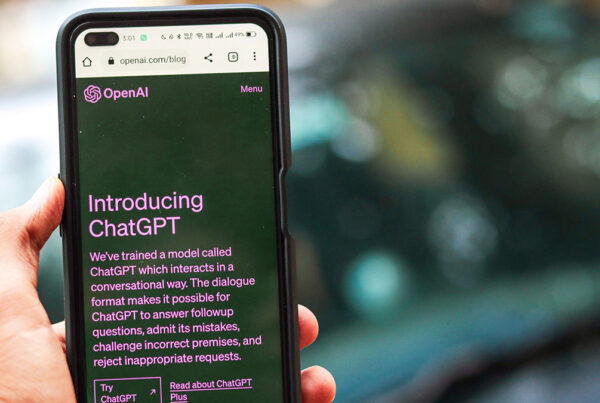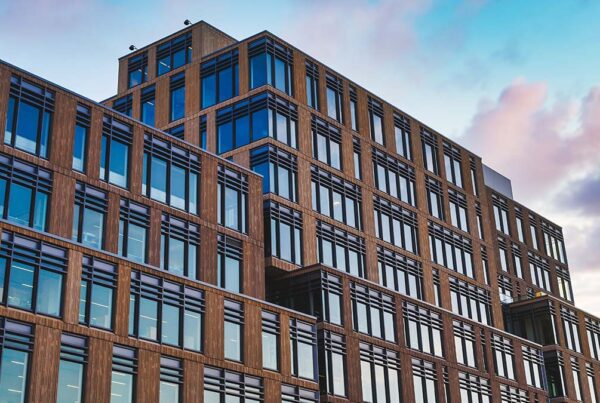
One of the most challenging aspects of being an active investor in commercial real estate is getting the money to purchase properties. This is challenging—especially when you’re first starting—because commercial properties are commonly listed at a higher price point than residential properties. Additionally, lenders regularly require 20–30% of the purchase price as a down payment for commercial property loans compared to the 3%–5% they allow for residential mortgages on a primary residence.
The larger down payments of commercial real estate add up quickly. The down payment for a million-dollar commercial property is often $200,000 to $300,000, which can be a lot for a single individual to generate. However, the nice thing about commercial real estate is that every deal is like a puzzle, and you can mix and match different pieces to complete the deal. If coming up with the down payment or funds to acquire and rehab rental properties is a hurdle for you to personally generate, it’s possible to use different tactics to purchase commercial real estate with little or no money down.
In this article, we’re going to explore some of those tactics. Before we do, let’s clarify what it means to buy commercial real estate buildings with little or no money down.
What Does it Mean to Buy Commercial Property with No Money Down?
To buy a commercial property with little or no money down means that you use other people’s money to fund and finance the deal rather than your own. You still need the money to fund the deal, it’s just that no money is not coming directly out of your pocket. There are multiple ways to do this, including raising funds from others, asking the seller to carry the financing, or establishing a lease-to-own contract.
Regardless of how you structure the deal, the point is that you’re drastically reducing—and ideally eliminating—the amount of money you need to personally pay to acquire a commercial property.
Now, let’s take a look at the different ways you can consider structuring a deal to acquire a commercial property with little or no money down.
1. Seller-Held Second Mortgage
There are times when the seller doesn’t need the full sum of cash from selling a property. This may happen if the seller is retiring and prefers having rental income rather than a lump sum of money, or you’ve managed to build a relationship with them, and they’re willing to help you out to finalize a deal. In these instances, a seller-held second mortgage can be a good way to fund a deal with no money out of pocket. Here’s how it works:
Let’s say that you find a profitable storage unit and a lender who will finance 80% of the purchase price. Rather than paying the 20% down payment yourself, you can ask the seller to keep 20% of their equity in the deal and cover the down payment for you. The terms regarding how you will pay the seller the 20% back are negotiated and established directly between you and the seller. One possibility is that you pay them back in monthly installments with a set interest rate over a set period of time. Another possibility is that you pay it back in a single payment by a set date in the future after you’ve had a chance to stabilize the property.
As with all no-money-down deals, not every lender will be willing to do this. So, before you start negotiating with sellers on terms to use some of their equity to cover the down payment, be sure to have a lender lined up who’s willing to support this strategy.
2. Private Money from Friends & Family
If you don’t have the money to fund the down payment of a deal yourself, another place to find money is through your friends and family. If you have friends or family who have the money and are willing to lend it to you, this can be a very simple and straightforward way to create mutually beneficial terms that help you and your family member or friend.
If you go this route, be sure it is a simple loan for the down payment and consult with a commercial real estate lawyer to ensure the way you’re thinking about structuring it is not a syndication. If you try to source this money or structure the financing in a way that crosses the line into the realm of syndication, then you must comply with rules 503(b) and 503(c) by law. Talk with your expert counsel to ensure sure you don’t unknowingly violate syndication laws.
3. Lease to Buy
Another option to acquire a commercial property with little to no money down is to rent a property with the option to purchase. This strategy is best for small business owners who need a location to operate. To establish a lease-to-buy acquisition, you need to work with the property owner(s) who are leasing their property (or your current landlord/property owner if you are already operating a business out of a location you like) to establish the terms of the lease/option agreement.
Fundamentally, the lease/option agreement needs to outline the amount to be paid regularly by the buyer for the use of the property, the length of the lease, the percentage of recurring rent that will go toward the purchase price of the property, the date of acquisition, and the amount due at the point of acquisition (if any).
If you don’t own a business or don’t need space for your business, it’s also possible to rent the property with a rent-to-own lease and then sublease the property to another business. In this scenario, the business you sublease to is funding the property acquisition for you. This adds additional layers of complexity which it more challenging to find and put together all of the pieces, but it’s not impossible. If you are establishing a lease-to-purchase contract, be sure to have it reviewed by an experienced commercial real estate lawyer.
4. Assume the Existing Mortgage (AKA “Subject To” Financing)
In some instances, you may be able to use a “subject to” contract to acquire a commercial property. When buying real estate “subject-to,” you simply take over the seller’s mortgage payments in the seller’s name and gain title to the property. It’s called “subject to” financing because the deal is “subject to” the current financing that is already in place.
This strategy is beneficial for the buyer because it enables the buyer to purchase properties with no credit and minimal cash. It can also be beneficial for sellers who are under financial stress because it allows them to continue making their monthly payments on time in their name, which can save them from foreclosure, prevent their credit scores from decreasing, and even restore or improve their credit scores.
5. Seller Financing
Seller financing is another simple method for acquiring real estate using the seller’s assistance. It’s similar to a seller-held second mortgage, but it’s effectively the opposite in that in a seller-held second mortgage, the seller is providing a down payment, and the bank is providing the loan. In seller financing, you (or a bank) need to provide the down payment, and the seller provides the loan on the remainder of the balance.
This strategy works best with sellers who own the property outright and don’t need a large sum of money right away. In a seller-finance deal, the seller basically becomes the bank, and you—as the buyer—pay them a monthly payment with interest. The terms of the deal are up to you and the seller, so you can determine how much of a down payment is required, what the interest rate is, how long the loan is amortized, and when/if the loan will balloon.
Seller financing may sound like it only benefits the buyer, but it can be a significant benefit to the right seller as well. First, it can help the seller reduce their tax obligations from selling the property. Receiving a large payout in a single year will likely catapult them to the highest tax bracket if they’re not already there, whereas taking smaller monthly payments may keep them in a lower tax bracket so they can keep more of the money. Additionally, the seller may be at a point in their life where having a reliable income earning respectable interest is more desirable than a large sum of money that they then need to go figure out how to invest. The monthly payment with interest could also help them increase their overall returns in the long run.
6. Negotiate the Down Payment Based on the After Repair Value (ARV)
Banks often want 20% to 30% as a down payment because they don’t want the borrower to get too far underwater if the market declines after a property is acquired. However, if you have a good track record with a bank, they may be willing to allow you to utilize 20% to 30% of the ARV as your down payment if you can generate the value by fixing up the property. Here’s how it can work:
Let’s say you negotiate to purchase a property for $800,000, but the ARV after your $100,000 rehab will be $1,200,000. If the bank wants you to have 25% equity in the deal and they allow you to you refinance or finish financing the property after the rehab at the new value of $1,200,000, then 25% would be $300,000. This means you could keep the $300,000 in the property as the 25% equity and then finance the other $900,000 with the bank, which would allow you to pull out your $100,000 rehab costs. After this is done, your down payment has been generated by the new value you created through your renovation, and you get your $100,000 back to use again on another deal.
This can be complicated to do, and you need to 1) be sure of your costs and ARV and 2) have a strong relationship with a lender who will allow you to do this.
7. Use an SBA Loan
If you own a business or are buying a new business that requires retail space, office space, or another type of commercial space, it’s possible to leverage an SBA loan to acquire the business and commercial building. An SBA loan is a loan designed for small businesses and backed bu the U.S. Small Business Administration (SBA). An SBA small business loan comes in two types of loans: 7(a) loans and CDC/504 loans.
The SBA 7(a) loan program allows you to secure loan amounts of up to $5M to cover many business purposes, such as working capital, fixed assets, and real estate. The SBA CDC/504 loan program allows you to secure loan amounts of up to $5.5M to finance fixed assets, buildings, and land. Each of the SBA loan programs allows you to secure loans with little money down and can be a creative way for business owners to acquire new property.
Depending on your situation, you may be able to leverage an SBA loan to cover business and commercial real estate acquisitions and secure a personal loan to cover the down payment of the SBA loan. As always, work closely with a CPA, commercial lender, and attorney if you try this.
8. Get a Business Partner
Just because you don’t have the money doesn’t mean there’s not someone else out there who has the money but doesn’t have a deal. If you’re able to find a deal, ask around for people who may want to partner with you to fund it and make it happen. Your “buy-in” is the act of finding the deal and presenting the opportunity. Your partner’s “buy-in” is the cash needed to acquire it. The more people that are involved, the better off you likely are to switch to a syndication model. However, if you know one or two people who have the money and want to partner with you on a property, it’s not a bad option to explore. Just ensure that—as with all commercial real estate investing strategies and contracts—you have experts double-check everything you’re doing and review the contract to protect yourself.
9. Offer a Higher Price with Better Terms
This one can be complicated as it may impact or destroy the cash flow of the deal. However, it’s possible that—depending on what the seller is asking for—you can offer a higher price and/or a higher interest rate to get the seller and/or lender on board with a zero-money-out-of-pocket acquisition.
10. Make a Trade
This is likely the rarest no-money-down strategy, but you never know where a seller is personally or financially until you talk to them. There’s a chance they may be interested in a property, business, vehicle, or something else you have as a form of payment or down payment on their property. This type of no-money-down strategy won’t likely work with bigger deals and other financial institutions, but it could work with smaller commercial deals that are owned outright by a single individual.
What Banks Support No Money Down Strategies?
Every bank has a different loan program, so it’s important to talk with different lenders at different banks to understand their loan terms and options. Sometimes credit unions are willing to be more flexible and provide a lower interest rate if they’re local to the area and are in a growth stage. Larger financial institutions may be hesitant to work with a first-time commercial investor on a no-money-down strategy, whereas other larger financial institutions may support it. Ultimately, it boils down to the relationships you’ve built with lenders and the real estate deal you bring to the table.
If you need bank financing, but a traditional bank loan is out of the question, you can also consider hard money lenders who can support you with a different type of loan and financing options like a bridge loan. These types of loan options can be a good idea for new investors if you need short-term capital to acquire and renovate a project before refinancing it into a no-money-down deal. Hard money lenders typically require some “skin in the game” for commercial deals and charge higher rates, however, if you have done your due diligence and feel confident about the property value after the renovation of a value-add deal, it’s possible that you can get all of your liquid money back out of the deal when you refinance to help make it a “no money down” strategy.
Is it difficult to buy a property with no money down?
It depends. Not all “no money down” strategies are known by all sellers, lenders, and brokers. Because of this, you may need to educate one or more parties on the strategy before they can even consider it. Even then, it can be human instinct to dislike or avoid things we’re not familiar with, which can make it more challenging to convince people it will work.
That said, you never know if you don’t try. Some sellers may be in situations where one of these no-money-down strategies works better for them than standard commercial loans. Others who you’ve developed a relationship with may want to help you out and be willing to use one of the strategies that work best for you. The key is to frame the strategy as a win-win (assuming it is one) and be willing to educate others on what you’re trying to do.
Final Thoughts
If you’re attempting to purchase an investment property without any money, a no-money-down technique can be a great option to explore. It’s possible for no-money-down strategies to work on all types of commercial properties, including office buildings, multifamily, retail, industrial, special use, and more. However, be aware that not every acquisition will be successful using one of these tactics, and that’s okay.
Everything covered in this article is at a high level, so make sure you have all of your bases covered when constructing a deal and always speak with your lawyer, CPA, and other expert advisors. No money down tactics can be challenging to pull off, but the most prosperous commercial real estate investors are ultimately the most persistent and inventive; they find methods to make deals happen, frequently without having to commit a sizable amount of their own money.



